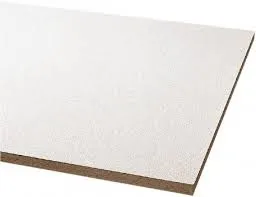- Afrikaans
- Albanian
- Amharic
- Arabic
- Armenian
- Azerbaijani
- Basque
- Belarusian
- Bengali
- Bosnian
- Bulgarian
- Catalan
- Cebuano
- Corsican
- Croatian
- Czech
- Danish
- Dutch
- English
- Esperanto
- Estonian
- French
- German
- Greek
- Hindi
- Indonesian
- irish
- Italian
- Japanese
- Korean
- Lao
- Malay
- Myanmar
- Norwegian
- Norwegian
- Polish
- Portuguese
- Romanian
- Russian
- Serbian
- Spanish
- Swedish
- Thai
- Turkish
- Ukrainian
- Uzbek
- Vietnamese
12月 . 14, 2024 12:19 Back to list
t bar for ceiling grid
Understanding T-Bar for Ceiling Grid An Essential Element in Modern Architecture
In the realm of modern architecture and interior design, the significance of ceilings often goes unnoticed. While much attention is devoted to walls and flooring, ceilings play a crucial role in defining the overall aesthetics, acoustics, and functionality of a space. One of the most prevalent and effective solutions for suspended ceiling systems is the T-bar grid. This article delves into the intricacies of T-bar for ceiling grids, exploring its features, benefits, installation process, and applications in various settings.
What is a T-Bar Ceiling Grid?
A T-bar ceiling grid is a suspended framing system that supports ceiling tiles or panels. Made of lightweight materials such as aluminum or galvanized steel, the T-bars are shaped like the letter T. These bars are installed perpendicular to the main runners, forming a grid pattern that effectively supports the ceiling tiles. The grid system creates a void between the ceiling and the structural ceiling above, allowing for easy access to electrical wiring, plumbing, and HVAC systems.
Benefits of T-Bar Ceiling Grids
1. Aesthetic Appeal T-bar grids provide a clean and uniform appearance to ceilings, enhancing the visual appeal of a space. They can be painted to match or contrast with the ceiling tiles, contributing to the overall design theme.
2. Acoustic Properties Many ceiling tiles used with T-bar grids are designed to improve sound absorption. This is particularly beneficial in environments such as offices, classrooms, and auditoriums where minimizing noise is essential for comfort and productivity.
3. Ease of Installation The lightweight nature of T-bar components makes them easy to transport and handle. Most installations can be completed quickly, minimizing downtime for businesses or residents.
4. Accessibility The design of T-bar grids provides easy access to the space above the ceiling. Maintenance personnel can quickly reach electrical or plumbing systems without the need for extensive deconstruction.
5. Cost-Effective Solution Compared to traditional drywall ceilings, T-bar grids can be a more economical choice. They require less labor and materials, making them a popular option for both residential and commercial projects.
t bar for ceiling grid

Installation Process
Installing a T-bar ceiling grid involves a series of methodical steps
1. Planning and Measurement First, the dimensions of the space must be accurately measured. A grid layout is designed considering the size and type of ceiling tiles to be used.
2. Installing Main Runners The main runners are typically installed first, extending the length of the room. They are secured to the ceiling joists using hangers spaced at regular intervals.
3. Adding Cross T-Bars Once the main runners are in place, cross T-bars are inserted perpendicular to the main runners. These bars are evenly spaced to ensure that the ceiling tiles will be duly supported.
4. Fitting Ceiling Tiles Finally, the ceiling tiles are carefully placed into the grid. Some tiles may require special cutting to fit around the edges, and attention is given to ensure that they are level and secure.
Applications of T-Bar Ceiling Grids
T-bar ceiling grids are widely used across various sectors. In commercial buildings, they are a common choice for offices, retail spaces, and healthcare facilities, where aesthetics and functionality are paramount. In educational institutions, T-bar systems facilitate acoustics in classrooms and hallways, enhancing the learning environment. Additionally, residential spaces often incorporate T-bar grids in basements and drop ceilings, allowing for creative design while ensuring practicality.
Conclusion
In conclusion, T-bar ceiling grids serve as a vital component in contemporary architecture, offering a balance of style, functionality, and economic viability. As designers and architects continue to innovate, T-bar systems remain a reliable choice for creating exceptional spaces. Whether in commercial or residential projects, the advantages offered by T-bar ceiling grids make them an indispensable aspect of modern interior design. With their ease of installation and versatility, T-bar grids are perfectly suited to meet the diverse needs of today’s dynamic construction landscape.
-
Transform Interiors with PVC Gypsum Ceiling: A Stylish, Durable, and Moisture-Resistant SolutionNewsMay.19,2025
-
The Smart Interior Upgrade: Discover the Durability and Versatility of Gypsum Ceiling Access Panel SolutionsNewsMay.19,2025
-
The Smart Choice for Interior Design: Discover the Value of PVC Gypsum Ceiling SolutionsNewsMay.19,2025
-
Mineral Fiber Ceiling Tiles: The Smart Blend of Performance and AestheticsNewsMay.19,2025
-
Mineral Fiber Ceiling Tiles: The Superior Choice Over Gypsum for Sound and Fire SafetyNewsMay.19,2025
-
Mineral Fiber Ceiling Tiles: Eco-Friendly Strength and Style for Every CeilingNewsMay.19,2025







